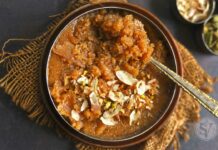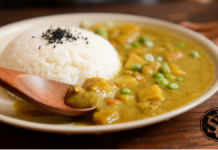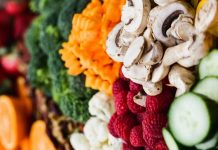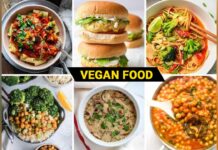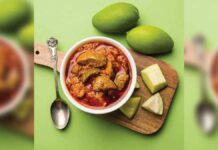Cravings for junk food are a common reason that people ditch their healthy eating plans. They can lead to unhealthy eating habits and be the biggest obstacle to weight loss.
Have you ever found yourself craving a second helping of dessert after a filling dinner, or finishing a sharing-size bag of crisps or chocolate? You are not alone! It can be incredibly hard with some foods to know when to say stop.
What is it that makes certain foods seemingly irresistible? What keeps us coming back for more, even when we know we’re full? What makes us binge on foods we know are bad for us?
Key points:
Resisting junk food cravings is not a case of willpower.
Junk foods are specially engineered to target our pleasure receptors in the brain.
How junk food is engineered to be ‘just right’
Ever noticed that no matter how full you feel after a meal, you can always make room for dessert? This is most likely down to a psychological phenomenon called ‘sensory-specific satiety’.
As we consume more of a particular flavour, our taste buds slowly get more and more tired of it, and When presented with a new flavour, we get more reward from it, and so we continue eating. We can see this concept in action at an all-you-eat buffet; we’re likely to eat more because there is a variety of flavours to keep our taste buds interested!
However, our taste system can be tricked when salt, fat, and sugar are carefully combined in expertly measured amounts to be ‘just right’. At this point, we keep coming back for more, even when our bodies are trying to tell us to stop because we keep experiencing pleasure.
Key points:
The more we eat one type of food the less rewarding we find the taste.
Foods that hit the bliss point override the brain’s natural ‘stop’ signal and keep providing us with pleasure.
This leads to us wanting more and more of that enticing food.
The science behind the bliss point
So what’s going on when we consume foods engineered like this? Why can’t we get enough?
Our bodies respond to foods that hit the bliss point by triggering reward pathways in our brain and . Dopamine is a neurotransmitter (chemical messenger) in the brain that is involved with feelings of euphoria, bliss, motivation, and pleasure.
The result of this is a feeling of pleasure, that acts like a high, and we keep on coming back for more. This leads to a perpetual cycle of cravings, eating more junk, weight gain, and more cravings!
In a on the topic, psychiatrist Judson Brewer points out that this cycle is built upon context-dependent memory. Our brain remembers what actions make us feel good, such as eating chocolate. Then when we feel bad for whatever reason, our brain says ‘eating chocolate might help’, and we are driven to eat chocolate. After we repeat this process enough, it becomes an automatic habit.
Our bodies respond to foods that hit the bliss point by triggering reward pathways in our brain and encouraging dopamine signalling.
Our brain remembers what foods make us feel good and triggers a craving for these foods when we feel bad.
There is nothing wrong with enjoying food, but binging as a result of craving, for any reason, is usually down to the bliss point.
What foods are the main culprits?
You might be surprised about which foods are the culprits. Some obvious bliss-point items include:
Cakes
Biscuits
Doughnuts
Ice cream
Crisps
Muffins
Chocolate
Sweets
However, it’s more than just the obvious foods. Next time you pick up a jar of tomato sauce at the supermarket, stop to take a look at the ingredients and see just how much sugar and salt are hidden inside. Less obvious bliss-point foods include:
Sauces
Dressings
Dips
Soups
Bread
Cereal bars
Surprisingly, all these products can contain that longed-for trio of salt, sugar, and fat that keeps us coming back for more.
Key points:
Avoiding the obvious foods, like cakes and biscuits, can help to reduce your future cravings for these foods.
Surprisingly, many unexpected foods have also been engineered to leave you wanting more.
Top tips to reduce junk food cravings
1) Break the habit
In the TED talk mentioned above, Judson Brewer explains that the best way to break a habit, like junk food eating, is to become aware of what is happening in your mind and body when we crave.
Rather than trying to ignore your cravings, try getting curious and recognising how you feel when you crave or eat a particular food. Understanding what happens when we eat junk food helps us to step back and become less interested in this habit.
Next time you have a craving for some junk food, getting curious about what’s happening (‘am I feeling sad, stressed, or hungry?’) will help you let the craving go. Then, repeating this process enough will help you break the habit of feeling compelled to eat from cravings. Consider finding other avenues for emotional release if you notice that you crave junk food when you are stressed or sad. Walking, music, or writing in a journal can all be great stress busters.
2) Eat junk food mindfully
Mindful eating can help us break habits while still enjoying junk food occasionally. This involves focusing solely on the taste and texture of the food you are eating and any sensations you feel in that present moment.
Occasionally consuming junk food is part of life. The key is to eat it free from distractions (e.g. not in front of the tv or at your desk at work) and enjoy it so that you feel satisfied without overeating it. Eating mindfully can help us tune into our internal hunger signals and prevent them from being overridden.
3) Build balanced meals
Building balanced meals can help us feel satisfied and reduce the risk of junk food cravings in between meals. Opt for:
Fresh vegetables, (e.g. spinach and peppers).
Unprocessed meat and fish (e.g. chicken or salmon).
Wholegrain carb options (e.g. brown rice or rye bread).
is an example 7-day diet plan that is satisfying and focuses on balanced, healthy meals.
4) Be aware of bliss-point foods
Try to be aware of unexpected foods that we use every day (e.g. tomato sauce) which has also been engineered to have a bliss-point. Real food doesn’t need fussy engineering and fancy packaging to taste great. Try experimenting with making your food to replace shop bought ones with added sugars and salts.
For instance, you can easily make your tomato sauce using chopped tinned tomatoes, herbs, and garlic. Eating real food will not override hunger signals, nor overstimulate brain-reward systems, and still tastes delicious.
5) Sleep
Sleep is often overlooked when we discuss junk food cravings. However, has demonstrated that the more sleep deprived we are, the more hungry we feel. On top of this, when we are tired we are much more likely to crave and eat energy dense, sugar, and fat filled junk foods as opposed to healthy snacks. Getting 8-9 hours of sleep, compared to 6-7 hours, can massively reduce the risk of junk food cravings.
Key points:
Being curious and mindful of what happens when we crave junk food, and how we feel when we eat it, can help us break the habit of craving.
Recognising bliss-point foods and building balanced meals can reduce the number of cravings we have for junk foods.
A lack of sleep increases our hunger levels and influences our food choices.






